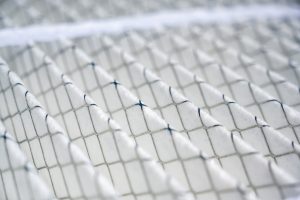Duct Maintenance During Construction
Introduction
Do supply ducts need to be cleaned?
Indoor air quality is top-of-mind for many new homebuyers. We all want good quality indoor air, so regularly cleaning the ductwork makes sense. Photos of filthy, mold-ridden ducts can look scary, but the reality is that ducts only need to be cleaned in rare cases of severe contamination. If an issue is suspected, a visual inspection of the interior of the ductwork, combined with air quality testing, will determine the course of action needed to remedy the problem.
However, according to the EPA’s duct cleaning guidelines, air ducts should only be cleaned when:
– There is substantial visible mold growth inside hard surface (e.g., sheet metal) ducts or on other components of your heating and cooling system.
– Ducts are infested with vermin, e.g. (rodents or insects).
– Ducts are clogged with excessive amounts of dust and debris and/or particles are being released into the home from your supply registers.
 Concerning indoor air quality (IAQ), the EPA states:
Concerning indoor air quality (IAQ), the EPA states:
“Duct cleaning has never been shown to actually prevent health problems. Neither do studies conclusively demonstrate that particle (e.g., dust) levels in homes increase because of dirty air ducts. This is because much of the dirt in air ducts adheres to duct surfaces and does not necessarily enter the living space.”
So when a homeowner takes ownership of their new home, they will expect a duct system that is clean, free from debris, and a new air filter has been installed. There are few simple steps you as a builder can take to deliver on their expectations.
Maintain a clean job site
During construction of a new home, dust and debris is inevitably created. A diligent builder will require that each trade contractor in the home cleans up after their work is complete. Rheia’s supply ducts reduce the chance of duct contamination due to their small diameter, but some dust and debris will inevitably settle in the duct openings and boots (more so with floor boots). To minimize this, cover the boots for as long as possible during construction.
Always use an air filter during construction
 In some situations, such as cold climates in the winter, the HVAC system is started up to condition the home. In particular, this is typical during drywall finishing work.
In some situations, such as cold climates in the winter, the HVAC system is started up to condition the home. In particular, this is typical during drywall finishing work.
When the HVAC system is running, an air filter must always be installed. Use a minimum MERV 8 filter during construction; failing to use a filter will:
– Contaminate the air handler and supply ductwork
– Reduce the efficiency of the HVAC system
– Compromise the life of the air handler
Exercise due diligence to keep the equipment and duct system clean. If there is evidence of construction dust in the boots, then vacuum clean the boots of any visible dust before system start-up.
System start up
Due to lower airspeeds, the return ducts can collect dust, the filter will collect some before it gets to the air handler, and some will settle in the return ductwork. Keep the return ducts clean to prevent the filter from getting clogged and needing to be replaced more often.
Before system start-up when the air handler is running, have the technician clean the air handling equipment per the manufacturer’s requirements. During system start-up, any remaining loose dust will move through the duct and be expelled into the room. This situation will be temporary until there is no more loose dust in the ductwork.
Resources
For your homeowners:
Step-by-Step: How to Clean the Rheia System
